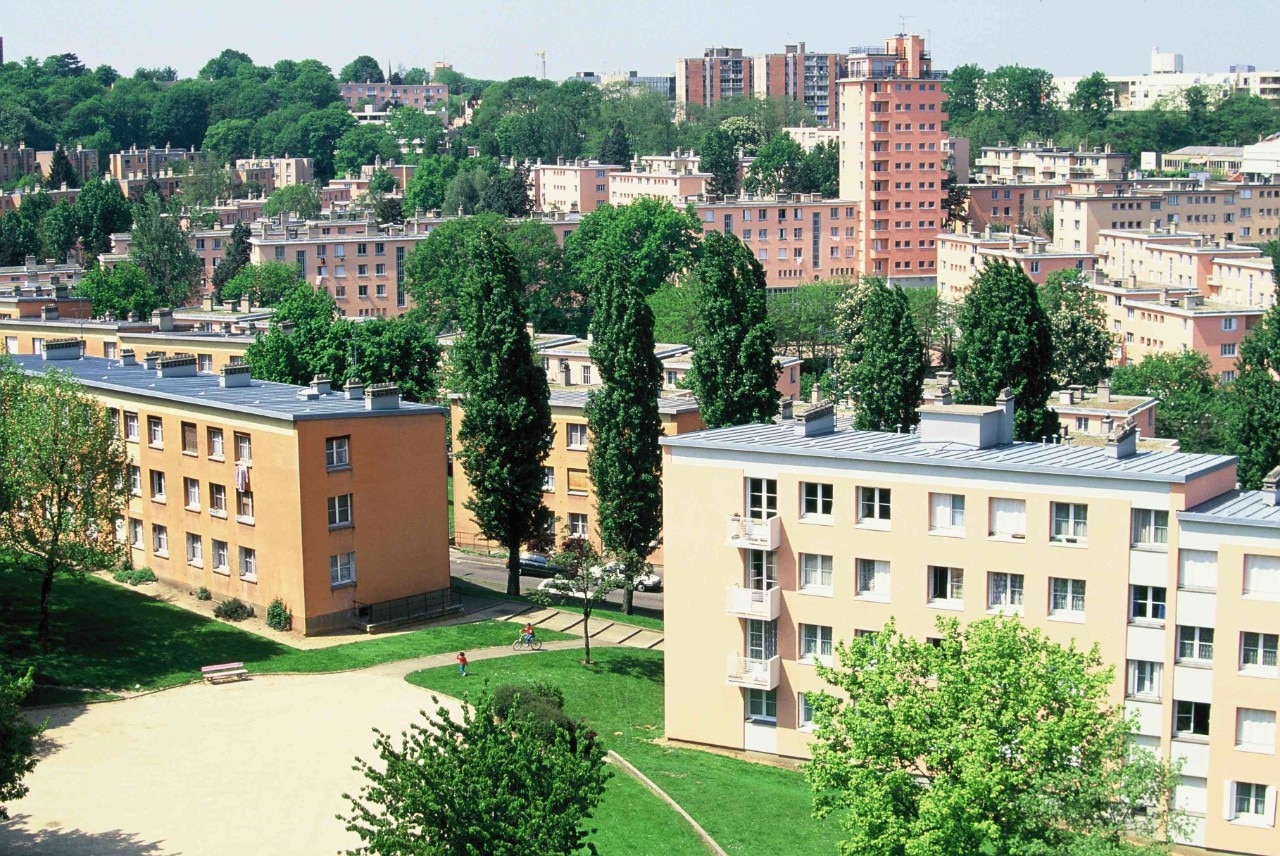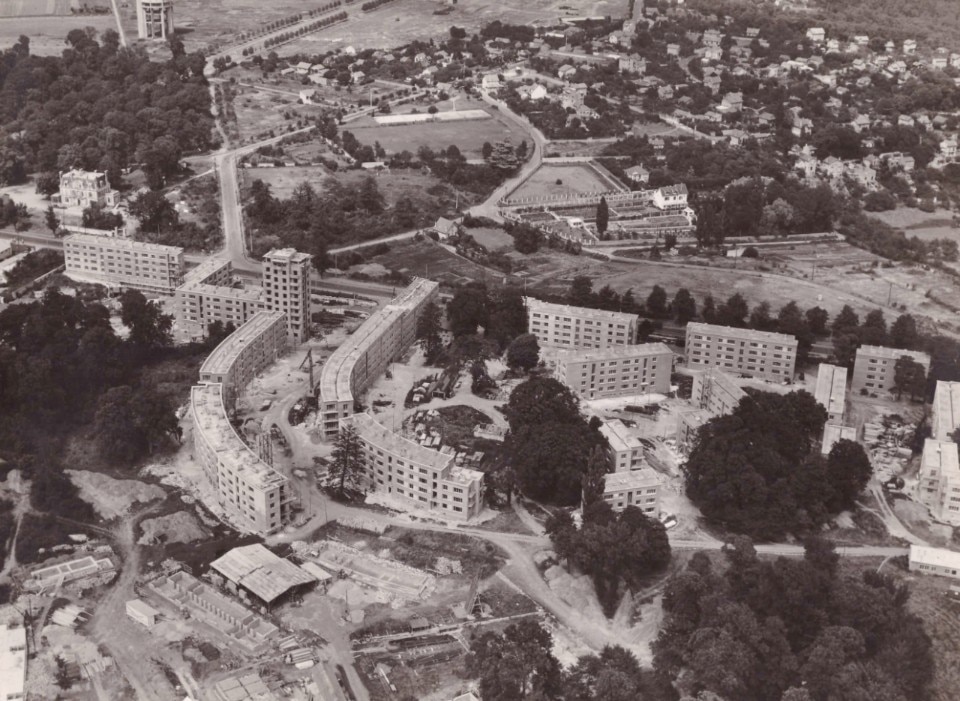La Butte Rouge represents an exceptional example of urban, architectural and landscape heritage of the Twentieth century, recognized internationally, and which has come down to us almost intact, while today it needs restoration. Is it possible to have a rehabilitation project that respects the architectural and landscape qualities of the Garden City, as well as its social dimension, associated with a careful management program? Apparently not.
The landscaped and wooded heritage of the area gives it an original character that must be preserved and which would be irreparably destroyed by the proposed modification of the local urban planning.
La Butte Rouge is one of the 15 garden cities built by the Seine OPHBM (the public housing office) in the suburbs of Paris to house the working-class population. Inspired by the garden-city theories promoted by Ebenezer Howard in early 20th-century England, the Seine OPHBM’s initiatives were an affordable response to the shortage and insalubriousness of housing in the Paris area.
In Châtenay-Malabry, the garden city was designed and built by a team of architects – Joseph Bassompierre, Paul de Rutté, and André Arfvidson, later replaced by Paul Sirvin – and a landscape architect, André Riousse. Construction was undertaken in seven phases between 1931 and 1965.
This unique and exceptional ensemble includes 3,900 homes set in 70 hectares of green space, a perfect blend of social reform and architectural innovation. It is an internationally recognized urban model in terms of architecture and landscape, as well as in social and economic terms.
The real estate speculation project of the former mayor of Paris George Siffredi (director of the urban development program of the business district La Défense) provides for the demolition of 15 buildings, i.e. 85% of the existing housing stock (2,800 homes), thus erasing one of the first examples of garden-city in France. Not a neighborhood, but an entire city. The buildings, which would be easy to renovate as it has been done since the 1920s, will be demolished under the pretext of being old and unsafe.

The demolition-reconstruction program, with thickening and raising, will destroy the overall coherence of the neighborhood, the balance between architecture and landscape, and will require the dismantling of the existing soil and the loss of trees that cannot be preserved. It will lead to an irreparable loss of the quality of housing in this neighborhood.
This project is in contradiction with the current requirements in terms of climate and environmental conservation. It is obsolete even before its realization.
The change of the Regulatory Plan has just been filed and submitted to public consultation for one month. 1,400 comments were posted on the survey website. Of which 86% were unfavorable judgments.
We know that more than 90% of the buildings in an early garden city will be destroyed or denatured. A massive densification of the buildings like the nearby speculative projects that will abolish the city-nature link so dear to its creator Henri-Sellier and his architects.
The hour is serious and despite the support of many politicians and architects it seems impossible to classify the site and oppose the former mayor Siffredi, determined to force a massive intensification project without any consultation with the inhabitants.It is clear that the real desire is denying the historical value of the heritage represented by La Butte Rouge for the benefit of vast speculative real estate projects. This clever modification of the urban plan is certainly not a good omen.

In Chatenay-Malabry, former mayor Siffredi first presented the Butte Rouge renovation project in an international competition, but once the winner was chosen by a professional jury, he was aborted. The competition winning design by architect Shorter was abandoned without any explanation.
Later it was decreed in collaboration with the social landlords and real estate promoters of a completely different project and to cancel from the city a large number of buildings considered obsolete to the chagrin of the residents’ associations that since then have quarreled with the former mayor to whom they reproach the absolute absence of consultation.
The conservation of the site, classifying it as many associations but also professionals of culture and architecture such as Jaques Lang, would have the value here of safeguarding the heritage but also promoting a notion of eco-neighborhood already present at the time of its construction. Not to mention all the poor populations that will be expelled.

Why not rehabilitate as for the garden city of Suresnes? Other models of garden cities on a European scale benefit from the protection of UNESCO heritage, such as that of the architect Bruno Taut in Berlin.
But will the fate of the Butte Rouge be like that of the Plessis-Robinson? Destroyed to build neoclassical buildings, architectural pastiches sprouting like mushrooms in the Parisian suburbs. Another neighborhood in danger from real estate developers is Emile Aillaud’s Tours Nuages in Nanterre.
Unfortunately it is not a simple “dressing” of buildings as the proposal for the Butte Rouge tries to skillfully lead us to believe: the dimensions and heights of the buildings will change the streets and the relationship with the surrounding nature. This poetic “city” has its days numbered. This age-old garden city in harmony with nature once disappeared will give way only to disposable architecture.













